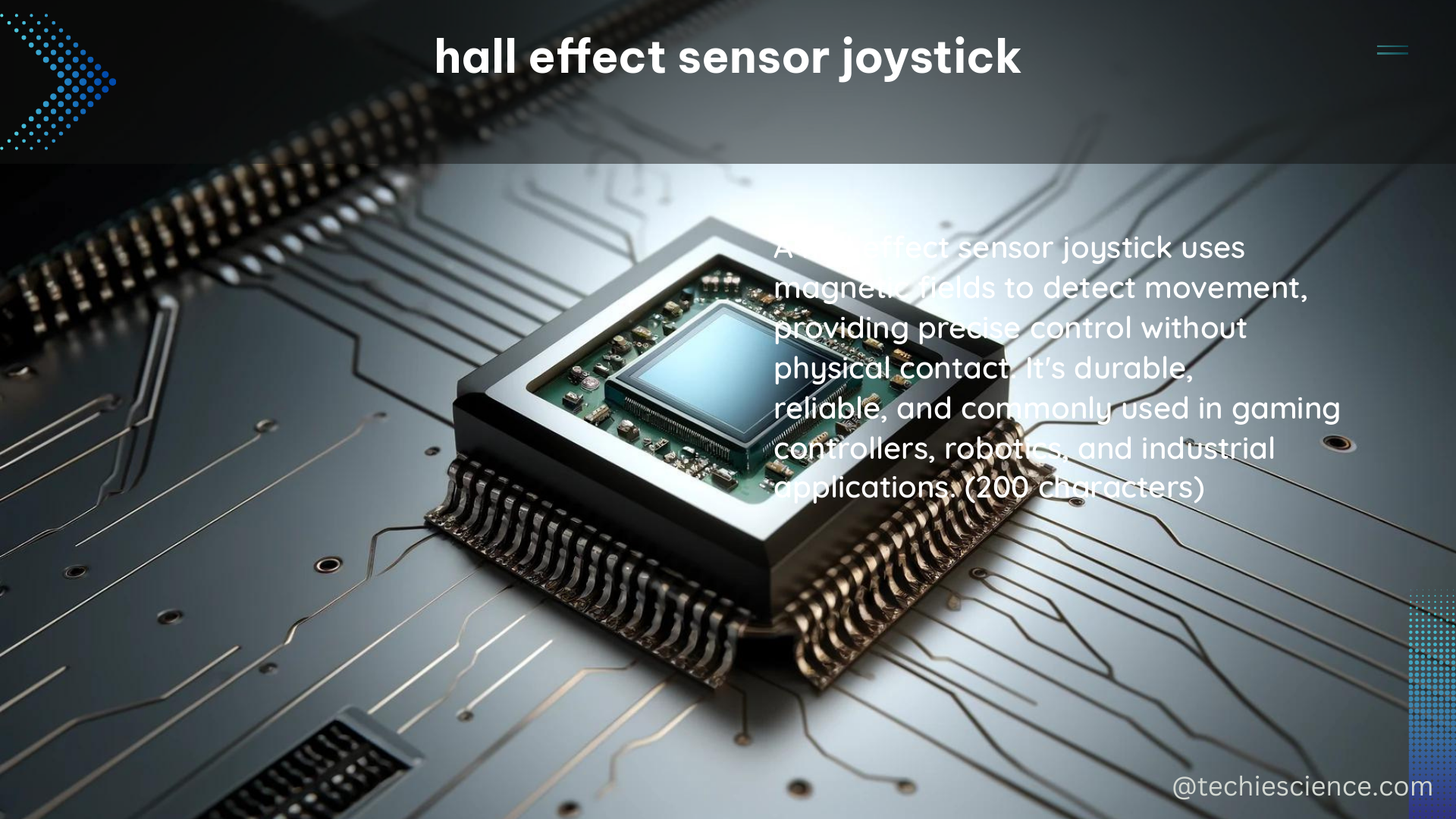Hall Effect Sensor Joysticks are a type of input device that utilize the Hall Effect principle to detect the position and movement of a joystick. These joysticks offer precise control, high reliability, and long operational life, making them a popular choice for various applications, including gaming, robotics, and industrial control systems.
Operating Voltage and Output Signal
Hall Effect Sensor Joysticks typically operate within a voltage range of 3.3V to 5V, providing the necessary power to the Hall Effect sensors and the supporting circuitry. The output signal from these joysticks can be either analog voltage or digital, such as Pulse Width Modulation (PWM) or I2C/SPI communication protocols.
Resolution and Response Time

The resolution of a Hall Effect Sensor Joystick is determined by the number of Hall Effect sensors used and the strength of the magnetic field. A typical resolution range is 12-16 bits, allowing for precise control and smooth movements. The response time of these joysticks is generally in the range of 1-10 milliseconds, ensuring a quick and responsive user experience.
Magnetic Field Strength and Temperature Range
Hall Effect Sensor Joysticks require a magnetic field strength of 5-100 millitesla (mT) for proper operation. This magnetic field is typically generated by a permanent magnet attached to the joystick’s base. The temperature range for these joysticks is typically -40°C to +85°C, making them suitable for a wide variety of environmental conditions.
Operating Life
One of the key advantages of Hall Effect Sensor Joysticks is their long operational life, which can range from 1 million to 10 million cycles. This durability is achieved through the non-contact nature of the Hall Effect sensors, which eliminates mechanical wear and tear commonly associated with traditional potentiometer-based joysticks.
DIY Hall Effect Sensor Joystick
Building a DIY Hall Effect Sensor Joystick requires the following components:
- Joystick: A joystick with a magnetic base, such as a standard game controller joystick or a custom-designed joystick.
- Hall Effect Sensors: Hall Effect sensors with a magnetic field sensitivity of at least 5 mT, such as the Allegro A1301, Melexis MLX90215, or Honeywell SS49E.
- Microcontroller: A microcontroller with an Analog-to-Digital Converter (ADC) or I2C/SPI interface, such as an Arduino, Raspberry Pi, or STM32 board.
- Magnet: A permanent magnet with a magnetic field strength of at least 5 mT, such as a neodymium magnet.
- Printed Circuit Board (PCB): A PCB to mount the components and provide the necessary electrical connections.
The steps to build a DIY Hall Effect Sensor Joystick are as follows:
- Mount the Hall Effect Sensors: Carefully position the Hall Effect sensors on the PCB so that they are aligned with the magnetic field generated by the joystick’s magnet.
- Connect the Hall Effect Sensors: Connect the Hall Effect sensors to the microcontroller’s ADC or I2C/SPI interface, ensuring proper wiring and power supply.
- Calibrate the Hall Effect Sensors: Calibrate the Hall Effect sensors to the specific magnetic field strength of the joystick’s magnet, ensuring accurate position and movement detection.
- Program the Microcontroller: Write firmware for the microcontroller to read the Hall Effect sensor outputs, process the data, and convert it into position and movement signals that can be used by the application.
- Test the Joystick: Thoroughly test the DIY Hall Effect Sensor Joystick to ensure it is functioning correctly, with smooth and accurate control.
By following these steps, you can create a custom Hall Effect Sensor Joystick that meets your specific requirements and provides a reliable and responsive input device for your projects.
References
- Hall Effect Joystick Design | DigiKey
- UPDATE on Hall Effect Sensors for DS4 : r/consolerepair – Reddit
- Low Power Design Using Hall-Effect Sensor – Texas Instruments
- Everything You Need To Know About Hall Effect Sensors – RS Online

The lambdageeks.com Core SME Team is a group of experienced subject matter experts from diverse scientific and technical fields including Physics, Chemistry, Technology,Electronics & Electrical Engineering, Automotive, Mechanical Engineering. Our team collaborates to create high-quality, well-researched articles on a wide range of science and technology topics for the lambdageeks.com website.
All Our Senior SME are having more than 7 Years of experience in the respective fields . They are either Working Industry Professionals or assocaited With different Universities. Refer Our Authors Page to get to know About our Core SMEs.